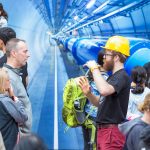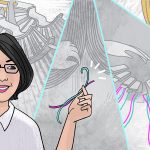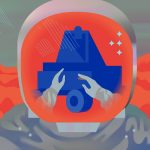CERN
From DOE, Sept. 10, 2019: Fermilab scientist Bo Jayatilaka is quoted in this article on ESnet, which has expanded to connect more than 40 major research institutions at speeds 15,000 times faster than a home network.
From Washington Post, Aug. 31, 2019: The social media network is packed with great science photos, and the granddaddy of all labs, CERN, also runs a behemoth of an Insta feed. The world’s largest particle physics lab, CERN is home to the Large Hadron Collider, a mammoth particle accelerator that is surprisingly photogenic.
From Physics World, June 12, 2019: Physics World posts a video recorded inside the ProtoDUNE neutrino detector by the particle physicist and vocalist Anastasia Basharina-Freshville, who sing-explains why the noble gas is used to detect the elusive particles.
A lot of people say they would like to travel to Mars, but Zoe Townsend doesn’t just talk the talk. As a mechanical engineer at CERN, she knows the importance of putting ideas to the test. To see if she could actually handle the unique challenges posed by living and doing science on another planet, Townsend spent 12 days on a simulated Mars mission in the deserts of Utah.
From Exascale Computing Project, May 28, 2019: Fermilab scientist Andreas Kronfeld is featured in this piece on the Excascale Computing Project, quantum chromodynamics and lattice QCD. Kronfeld, the principal investigator of ECP’s LatticeQCD project, explains how exascale computing will be essential to extending the work of precision calculations in particle physics to nuclear physics. The calculations are central for interpreting all experiments in particle physics and nuclear physics.
From Seeker, May 30, 2019: The LHC is the world’s largest particle collider, but has it hit its limit? This 13-minute video discusses how an international community of physicists are calling for a new CERN discovery machine that can reach even higher collision energies and potentially unlock the biggest mysteries of our universe.
From CERN, May 24, 2019: The CMS collaboration used a large proton–proton collision dataset, collected during the Large Hadron Collider’s second run, to search for instances in which the Higgs boson might transform, or “decay”, into a photon and a massless dark photon.




